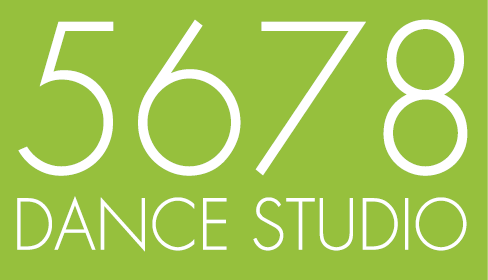Dress Code and Uniform Requirements
Historically, dress codes in dance have excluded or made dancers feel uncomfortable. 5678 commits to a student-centred environment where there are no strict dress code requirements in weekly classes. Students should dress in clothing that can facilitate their movement and participation.
Dressing appropriately can look like a leotard and tights, or it can look like a fitted T-shirt and shorts or leggings. Loose or baggy clothing is a safety issue because instructors cannot identify what a body is doing and so cannot ensure that the dancer is safe. When dancing indoors, leggings or tights are preferred so that instructors may make physical corrections without touching skin.
Hair should be tied back securely. For long hair and disciplines or classes with turning, a bun is best because it prevents the hair from whipping in students’ eyes as they practicing turning. Head coverings for religious or aesthetic reasons are welcomed so long as students hair and head covering does not interfere with their dancing. This could look like a hijab, scarf, toque, or wig.
Jewelry such as watches and earrings except studs should be removed as accidental contact with another dancer or object such as wall or floor could result in harm.
Shoes are also an important consideration, here are shoe guidelines for different dance disciplines:
- Ballet: Ballet shoes in a tone to match tights, Pointe shoes in a tone to match tights
- Jazz: Jazz shoes (for younger students Levels Junior – Tween levels or Level 1-3 beige shoes are preferred, for older students Teen, Adult or Level 4-9, black shoes are preferred)
- Tap: Tap shoes (for younger students Levels Junior – Tween levels or Level 1-3 beige shoes are preferred, for older students Teen, Adult or Level 4-9, black shoes are preferred)
- Contemporary: Half soles to match skin tones or socks for classes
- Acro: Bare feet
- Hip Hop: Bare feet, socks, or indoor runners. No outdoor runners permitted as it leaves rocks that other dancers may step on and injure themselves
- Ballroom: non marking soled shoes that are clean. Shoes with leather soles are easier to dance in than athletic runners
Taking an exam is like a performance and there are exam guidelines for dress and attire, much like how there are costume requirements for any performance. Requirements for exams are listed below.
 Enriching Kingston, Ontario through dance education since 1988
Enriching Kingston, Ontario through dance education since 1988